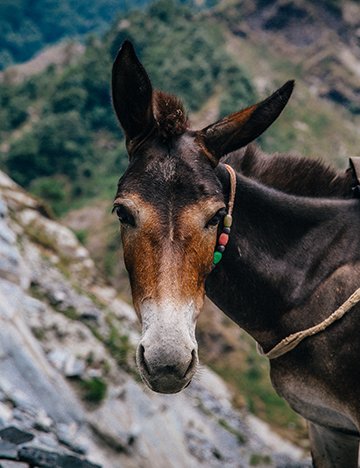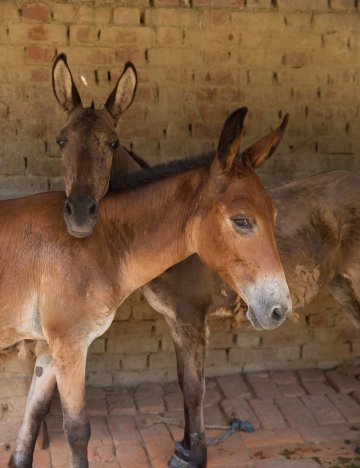Reasons why Mules rule
In our poll of your favourite equines, donkeys romped into an easy first place, horses came second, while mules languished in third place with a mere 10% of the vote. We're pretty sure this would all change though if you knew how awesome mules really are!
As well as our recent poll that rated mules in third place behind donkeys and horses, we carried out a survey in 2020 with nfpSynergy to see how well people in the UK know their mules. We found that just over a third of those polled could identify what a mule is, that is to say - the offspring of a male donkey and a female horse. 37% knew this, and even among equestrians only 41% knew!

If it helps to re-evaluate them, you could think of mules as having the best of both worlds: with their long ears and sturdy bodies, they combine the strength of a horse with the resilience and robustness of a donkey. They have what veterinary scientists call 'hybrid vigour', and with a more diverse genetic makeup comes certain strengths. They live longer than horses and tend to require less food than a similar-sized horse. They can also sense danger better and are more cautious than horses or donkeys, making them safer to ride when crossing difficult terrain. A mule’s skin is less sensitive than a horse or donkey’s skin, and is more resistant to sun and rain.
Due to these strengths they have played a massive part in Britain’s history, especially in WW1, where they made up over 200,000 of the one million equines sent out to serve in battle.
Mule facts

- There are just under 10 million mules in the world, and the majority of these are working.
- The reverse combination of parents, a male horse and a female donkey, is called a Hinny.
- Due to an odd number of chromosomes, mules are infertile.
- Mules were used in WW1 to carry artillery, food supplies and even wounded soldiers on the battlefield.
- Due to increased need, mules were bought from Argentina, Uruguay and Southern States of the USA. Half of Britain’s WW1 mules were imported.
- They arrived via gruelling sea voyages lasting weeks at a time, arriving in Bristol and moving on to Minehead for recuperation and training.
- Like horses, mules can’t vomit, which made these journeys even harder, with many mules lost on the journeys.
- In some developing countries where Brooke works, owning a mule can be a family’s main source of income, doing manual work like carrying bricks, building materials, food and water.
- Mules can live up to 50 years, with an average lifespan of 30-40 years. Sadly, in places where Brooke works, owners often have little access to suitable nutrition or veterinary services for their animals, meaning their life span is severely affected.
- Famous mules include the 1950s children’s TV character ‘Muffin the Mule’ and ‘Wallace the Great’, who was the first mule to win a British Dressage competition in the UK in June 2018.
Methodology: Online survey of 1016 members of the UK public, representative by age, gender and region, carried out by nfpSynergy.
Whilst much of the world has changed over the last 100 years, many mules are still working in punishing environments today, providing essential support to their owners and the families who depend on them.
